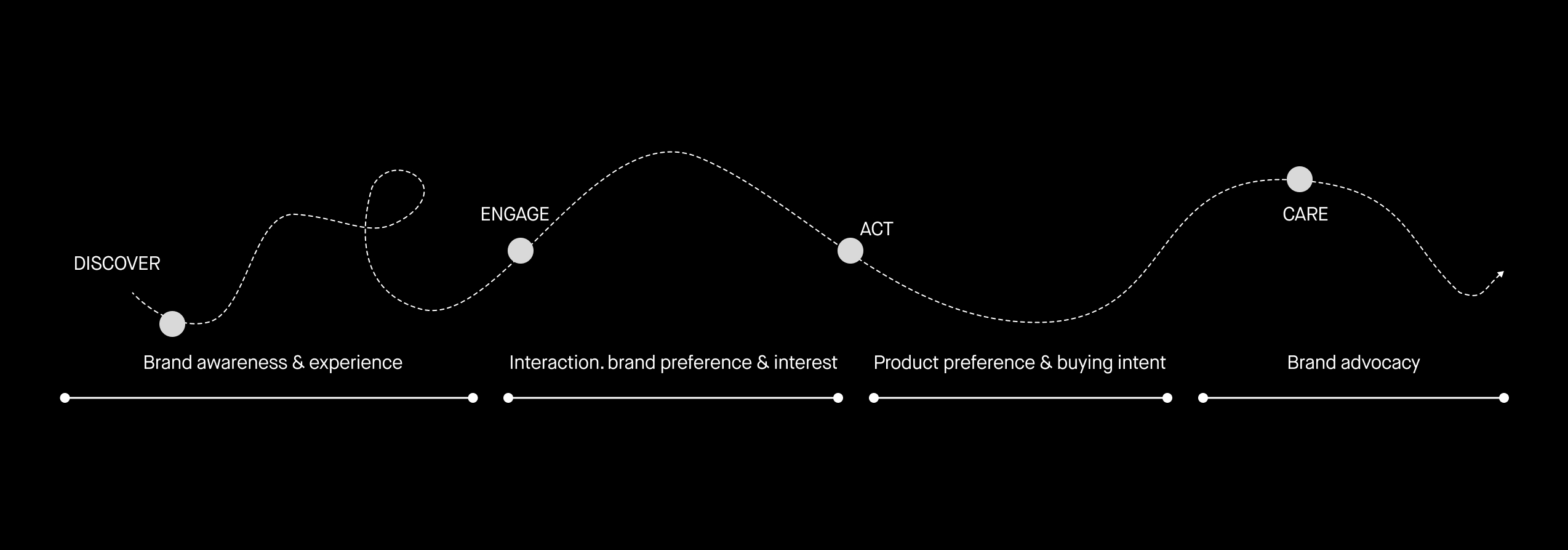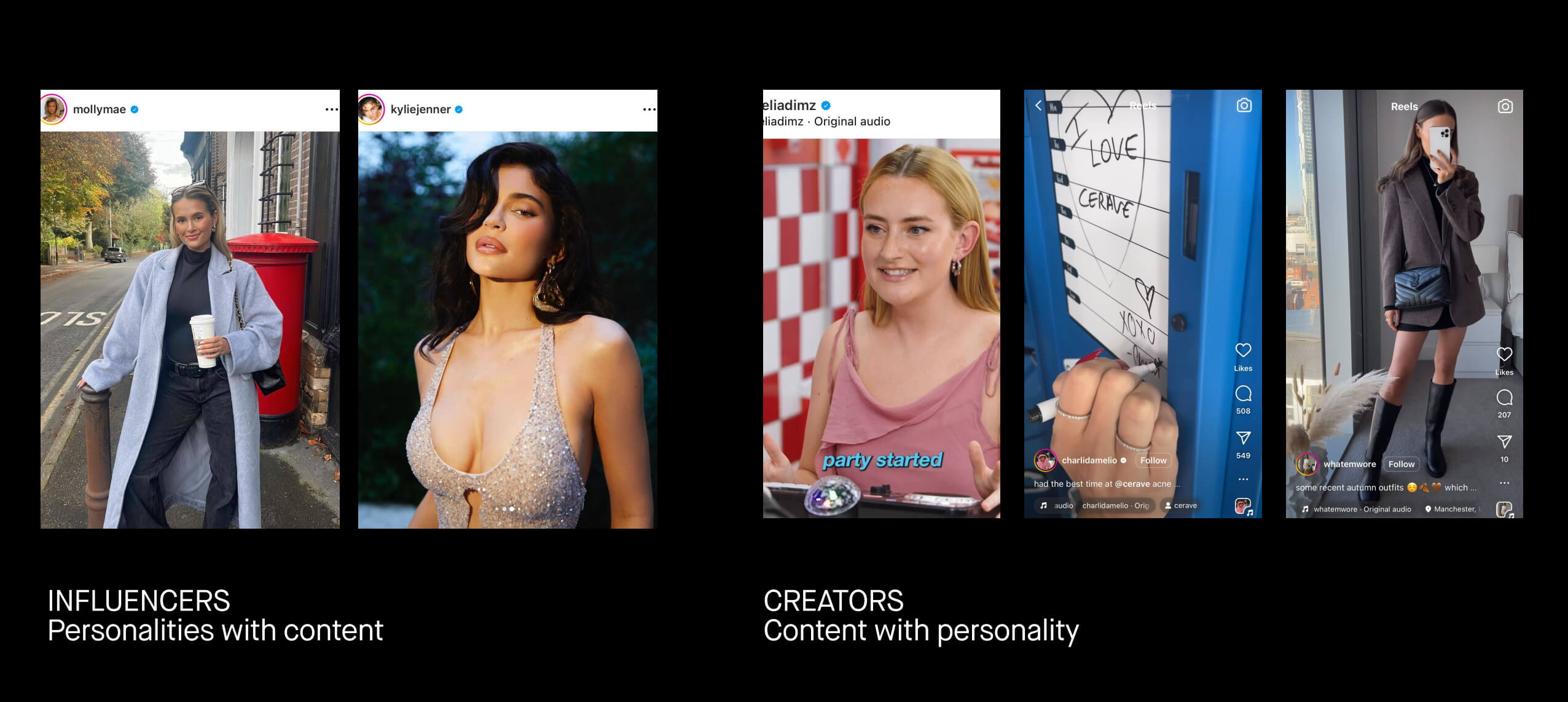The following talk is from the DEPT® 2024 Trend forecast event. To see all our 2024 predictions, download the 2024 digital trends report.
What’s next in influencer marketing is not just a tactical change. It’s the evolution of influencers’ role, the shifting balance towards creators, and the decisive impact of AI.
Altogether, this makes the currency of influence a major marketing investment. In 2024, 67% of marketers will significantly increase their spending on influencers, and 23% will allocate almost half of their total budget to it.
To help you stand out in a sea of influencer campaigns, we’ve identified six influencer marketing trends that will dominate 2024.
Diversification of objectives and full-funnel influencer marketing
There will be a shift of priorities and the understanding of influencer marketing as a valuable touchpoint across the full user experience.
We can already see its start, even though some marketers still value brand awareness over lower-funnel objectives.
But the ability of influencer marketing to drive conversion and loyalty will result in a much higher level of full-funnel activation, especially for brands that understand that influence marketing is not just a broadcast. It’s a sales lever.
For example, Peter Thomas Roth partners with influencers to showcase its most-loved products. And in 2023, they began selling directly on TikTok Shop. Their commerce team has noticed a direct correlation between influencer marketing efforts and immediate sales recognition, underscoring the power of TikTok as a platform that engages and converts. For two weeks in November 2023, 48% of total orders came from TikTok, many influenced by influencers on the platform.

More empowered influencers
With increased importance and investment, influencers will become more empowered with their interactions with brands.
It used to be that influencers needed brands to get their primary source of income, often fighting for brand partnerships. Now, it’s going the other way. Brands are starting to need influencers as a core part of their marketing strategy.
Because of this power shift, influencers will have more say in the work they can create and the briefs they accept. Platforms will support them more by rolling out products for monetisation.
This means brands will need to readjust expectations around compensation, especially for high-profile influencers.
Diversification of income through more products and platforms
We expect influencer marketing to move from an Instagram monopoly to a more diverse platform use and monetisation options.
It might be TikTok due to its high number of users, engagement, and content volume. However, just in the last year and a half, a variety of platforms have released 10 different ways for creators to monetise and test their content and increase their reach:
This indicates a fight for getting the highest share of creators across the different platforms. Creators will flock to where they can best reach their audience, so no platform is safe. And after a tremulous year for X, perhaps a new social platform will emerge.
The shift away from influencers toward creators
Creator commerce will become more rooted in the reality of influencer marketing. As big personalities with content, influencers will be replaced by creators, whose personalities usually come behind the content.
The majority of the influencers surveyed by CreatorIQ already define themselves as content creators or use the words “creator” and “influencer” interchangeably, while only 6% still prefer to be called just influencers.
Brands are also more likely to start working more with content creators.
Influencer Marketing Hub indicates that 39% of businesses plan to use nano influencers, whereas only 12% plan to use mega or celebrity influencers.

Unified and more holistic measurement approaches
A continued focus on measurement will catalyse the development of more sophisticated reporting methods.
Currently, brands are using a fragmented approach where the KPIs aren’t necessarily clear and are different across all organisations and brands. But in 2024, we expect this measurement puzzle to shift to a unified measurement strategy.
There will be actionable ways to measure activity at each stage of the funnel, with a focus on value over vanity. We see it as:
- No ‘one size fits all’ KPI
- Looking at value metrics like EMV or value per pound
- Valuing resonance over reach
- Using MarTech to determine incrementality
- Having a clear business goal to ladder up to
AI-driven process
AI will play a significant role in streamlining the process behind influencer campaigns.
At the moment, one of the most time-intensive parts of influencer marketing is influencer discovery and vetting. AI will make these processes much faster using such functions like:
- Image and video recognition
- Audience segmentation and profiling
- Performance analysis and learnings
- Automated brand safety analysis
- Brand suitability analysis and matching
By evaluating what the influencers’ content looks like and whether they have worked with your competitors in the past, AI will easily find an influencer that will match all of your specific requests.
In 2024, influencer marketing will become a continuous narrative that shapes the future of your brand. By continuing to evolve your approach, you’ll be able to adapt to the changes smoothly and leverage the power of influence to the fullest.
More insights
Questions?
Head of Paid Social





